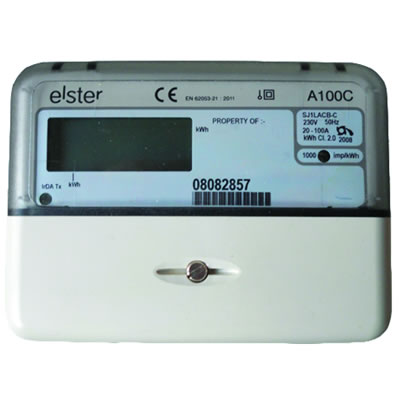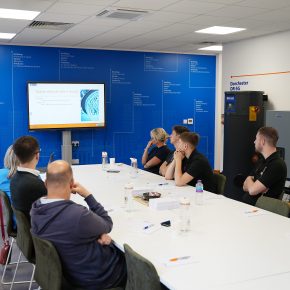
Installers must consider alternative heating solutions to reduce emissions
Figures recently released by the electricity and gas regulatory body, OFGEM, show that 4,448 households have already been accredited by the Government’s new Renewable Heat Incentive (RHI).
The scheme, which pays participants that generate and use renewable heat to heat their buildings, is the world’s first long-term financial support programme for renewable energy. Designed to generate heat from renewable sources as opposed to fossil fuels, the RHI will help the UK reduce greenhouse gas emissions and meet targets for reducing the effects of climate change.
Homeowners can now receive a financial incentive per unit of energy saved, with differing rates paid dependent on the technology used.
To maximise the opportunity, we are encouraging installers to use the Government’s new RHI Calculator when visiting customers to show them how much money they could save when switching to renewable energy sources. By entering just a few figures, homeowners can now instantly be shown how much money they could be paid by signing up to the scheme and installing technology such as solar panels or ground source heat pumps.
Statistics show that almost 25% of the pay-out total to date has been used to fund projects where solar thermal systems have been installed to heat a home’s water. Solar panels also offer the best level of payback, with 19.2p paid per kWh generated. Payments are made to homeowners on a quarterly basis.
Installers can offer customers further savings by calculating the money saved on monthly energy bills by making the switch too. There are many tools online that can be used to calculate an expected cost saving figure compared to how much they are currently spending.
The revenue opportunities generated by helping customers become more energy efficient aren’t just limited to the RHI though. Furthermore, with consumers becoming increasingly savvy regarding energy and subsequent cost savings, it is a great opportunity for installers to highlight other technologies available.
With the winter months fast approaching, homeowners will use 60% of their annual bill heating their houses during the colder months. Giving customers the opportunity to access real-time information on how much energy they are consuming and, more importantly, how much this is costing them, is a very useful tool. Installers can maximise this by promoting the use of smart meters. A recent survey showed that 64% of smart meter users saved up to £75 per year on their energy bills.
A further money saving incentive to be relayed to customers is the switch to electronic thermostats and radiators that feature built-in thermostatic controls. A typical three-bedroom semi-detached property can save up to £150 and 630kg of carbon dioxide a year through the installation of a new thermostat and, by turning down room temperatures by just 1°C, save a further £75. What’s more, ensuring that it is made clear that disruption will be limited due to it not being necessary to replace their boiler will also encourage customers to make the switch.
However, switching from a wet heating system using hot water pumped round the house to a modern, completely electric system can further reduce energy costs and overall usage. With insulation improving and homes becoming increasingly airtight, homeowners’ heating demands are changing. The versatility of electric heating means that systems can meet end users’ comfort and budgetary requirements.
An extra benefit of installing electric radiators is that they can be used almost anywhere in a room and come in a range of sizes to suit and, importantly for installers and homeowners alike, can be fitted and working within a matter of minutes. Installers can also leave customers safe in the knowledge that gone are the days of the expensive annual boiler inspection and with a simpler electronic system, maintenance is much easier.
Suitable for both new build and refurbishment projects, the newest electric heating technology features on-board energy monitors allowing occupants to see exactly how much energy is being used to heat a room, helping them make an informed decision on comfort versus cost.
With modern electric radiators featuring digitally controlled thermostats accurate to within 1°C, electric heating can quickly respond to maintain constant room temperature, reducing the overheating of rooms and limit the unnecessary consumption of energy.
With rising energy bills and a raft of challenging legislation driving the demand for renewable, low carbon alternatives to gas, oil and LPG heating, the time is right for installers and specifiers to investigate the alternative solutions that can be offered to consumers.
Latest news

25th April 2024
BMBI: Value sales in first two months were -3.4% down
The latest Builders Merchant Building Index (BMBI) report shows builders’ merchants’ value sales were down -4.7% in February compared to the same month a year ago.
Posted in Articles, Bathrooms & Toilets, Bathrooms, Bedrooms & Washrooms, Bricks & Blocks, Building Associations & Institutes, Building Industry News, Building Products & Structures, Building Services, Civil Engineering, Concrete, Cement, Admixtures, Drainage, Floors, Hard Landscaping & Walkways, Interior Design & Construction, Interiors, Landscaping, news, Paints, Paints, Coatings & Finishes, Plant, Equipment and Hire, Plumbing, Posts, Publications, Research & Materials Testing, Restoration & Refurbishment, Retrofit & Renovation, Sustainability & Energy Efficiency
24th April 2024
The lowdown on Origin’s New Soho Offering
Origin’s Soho External Door is the first launch in its new generation of products, setting a higher standard for the fenestration industry.
Posted in Access Control & Door Entry Systems, Aluminium Products, Architectural Ironmongery, Articles, Building Industry News, Building Products & Structures, Building Systems, Doors, Innovations & New Products, Posts, Restoration & Refurbishment, Retrofit & Renovation, Security and Fire Protection
24th April 2024
Mitsubishi Electric welcomes new code of conduct for smart appliances
Mitsubishi Electric welcomes a new code of conduct on energy smart appliances which the European Union (EU) announced yesterday at the Hannover Fair in Germany.
Posted in Air Conditioning, Articles, Building Industry Events, Building Industry News, Building Products & Structures, Building Regulations & Accreditations, Building Services, Exhibitions and Conferences, Facility Management & Building Services, Heating Systems, Controls and Management, Heating, Ventilation and Air Conditioning - HVAC, Plumbing, Retrofit & Renovation, Seminars, Sustainability & Energy Efficiency
24th April 2024
Hamworthy Heating expands CIBSE approved CPD modules with new hot water series
Hamworthy Heating, technical experts in commercial heating and hot water products, announce the expansion of its market leading CIBSE approved Continuing Professional Development (CPD) portfolio with the launch of three new learning modules.
Posted in Articles, Building Industry Events, Building Industry News, Building Products & Structures, Building Services, Continuing Professional Development (CPD's), Facility Management & Building Services, Heating Systems, Controls and Management, Heating, Ventilation and Air Conditioning - HVAC, Plumbing, Retrofit & Renovation, Seminars, Training
 Sign up:
Sign up: